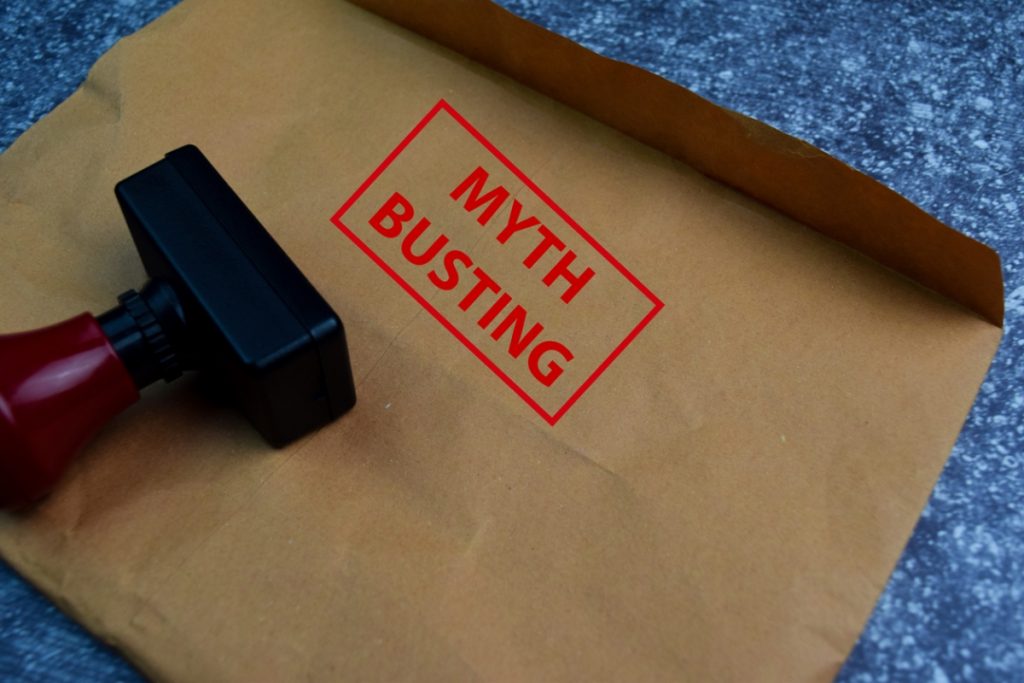
As an industry, eCommerce can be incredible to work in. It constantly evolves, innovates and shifts. It’s endlessly adaptable. Customer needs change and businesses and brands rise to meet those needs. It is exciting and daunting all at once.
But one consequence of those constant shifts is that there is a lot of dubious knowledge and theory around. Myths build over time and hang around for so long that people who should know better treat them as truth.
This week we are going to tackle some eCommerce myths that have been hanging around for years. The things that are thrown around and everyone just accepts as gospel. We are going to bust five of those myths right now.
Let’s get myth busting!

eCommerce Myth 1 – Physical Retail Is Dead/Dying
We are told, on an almost daily basis, that physical retail is dying. This started a long time ago and is best exemplified by this rather silly Marc Andreessen quote prophesying doom for retail in 2013:
“…I’d bet on the pure plays in ecommerce. Software eats retail.”
Investors, pundits and people with vested interests in tech, have underestimated the role physical retail plays in the purchase funnel, logistics and in building viable mainstream brands.
This is illustrated by the rise and to some extent fall (though “dropping at the moment” might be more accurate) of direct to consumer (DTC) online brands like Warby Parker and Casper mattresses.
You are probably familiar with both brands if you have listened to a podcast or watched a YouTube video in the last five years. They illustrate the online only eCommerce dream of “low overheads” and “no middleman” cost savings. However the reality is different. Direct to consumer brands are struggling with Casper mattresses in particular making year-on-year losses.
One of the reasons DTC brands are feeling the squeeze is rising digital ad costs. Digital ads, specifically on Facebook, were the method they would use to reach customers and raise awareness. Rising costs on that platform ate into their margins. Without a physical store you are entirely dependent on digital ad platforms for your public awareness.
The “Halo Effect”
This is a problem. The “physical retail is dead” brigade also tend to misunderstand the “halo effect”. Physical stores have a direct effect on digital awareness and consumer engagement with a brand online. Physical stores can drive spending online and the reverse is also true. In fact, according to icsc.com, the convergence of physical and digital shopping experiences leads to an increase in overall consumer spending. This is the long way of saying that forecasting doom for physical retail completely ignores the proven effectiveness of omnichannel or O2O shopping experiences. Stores, even in the age of personalized product recommendations, are also still better at upselling and cross selling than websites. Though that gap is narrowing.
Everyone, it’s just commerce…
It’s fair to say that maybe some people got too carried away with the “e” in eCommerce. eCommerce is actually just good old fashioned commerce. Physical retail has a very clear role in the purchase funnel. Retailers who can seamlessly blend their physical and digital shopping experiences are in a very strong position. Put it this way, Apple still opens stores. Even Amazon has physical locations.
So “physical retail is dying”? NO.
But retailers need a proper O2O strategy plus integrated omnichannel systems and processes.
Let’s consider that myth busted.

eCommerce Myth 2 – Online Shoppers Only Care About Price
The pandemic has shifted far more people into shopping online. It has accelerated digital transformation and revolutionized the commerce purchase funnel in just about every industry.
We are also entering into a huge cost of living crisis that will, in all probability, last for several years.
So online shoppers only care about price right?
NO.
According to a recent survey by Oblero, price did not feature in nine out of the top ten reasons why people shop online. The one reason that did feature price, was not even distinctly price related. It was related to the ability to spread payments over several months.
According to a research paper titled “Shopping Motivation and the Influence of Perceived Product Quality and Relative Price in E-commerce”, the motivations that drive people to shop online are far more complicated than price alone. Price plays a part, but in balance with factors such as convenience and perceived product quality.
Quality is an important word to think about in this instance. You could substitute it for “value” as both value and quality are entirely subjective. But both words refer to concepts associated with the product being purchased rather than simple price. This starts to lead into willingness to pay.
What is Willingness To Pay?
Willingness To Pay (or WTP for short) is a complicated subject that brings together some of these factors. Put simply, it suggests that WTP is based on extrinsic and intrinsic differences.
Extrinsic differences are observable factors like gender, location, age and income. These factors will all impact their willingness to pay thresholds. Intrinsic differences are factors you cannot observe without asking the customer directly like risk tolerance or brand fandom.
So just by looking into WTP we can see that customers’ relationship with price can fluctuate widely on factors that are not related to the product being purchased or the site it is being purchased from. Factors such as perceived quality, value and urgency are all factors that influence online shopping. It is not only down to price.
So let’s consider that myth busted!

eCommerce Myth 3 – B2B Is Too Different For eCommerce
The B2B space has characteristics that are very different from B2C.
B2B products tend to be more complex with long, delayed purchasing cycles with lots of different stakeholders.
But to suggest the B2B space cannot, or does not, offer eCommerce functionality is false. Especially since the pandemic.
A recent McKinsey report states that “two-thirds (65 percent) of B2B companies across industry sectors now offer e-commerce capabilities, defined as fully executing a sales transaction online.” In fact, according to McKinsey, digital interactions are now twice as important in the B2B space as they were before the pandemic. With B2B customers now preferring self-directed purchasing ordering experiences where they are in control.
We can now consider this myth, busted!

eCommerce Myth 4 – SEO Is Free And “Better” Than Ads
This is less a specific eCommerce myth and more a general online industry myth. But it does directly affect a lot of people (especially digital marketers, we see you) working in eCommerce.
There are two parts to this myth. One is that SEO is “free”.
We can debunk that right now. SEO is not free. Content creation alone, one aspect of SEO, takes lots of time and resources to get right.
The second part of this myth is that somehow organic traffic is “better” than ad traffic.
This is, to be blunt, rubbish. The best digital acquisition strategies use both SEO and paid search to ensure that the brand is at the front of the customer’s mind when they are ready to make a purchase.
SEO offers no guarantees for businesses. Google, the biggest search engine, can truncate (or ignore) your title tags and completely ignore your meta-description tags. Which means that some of that messaging you spent hours crafting to appear in front of customers in SERPs (search engine results pages) may not actually appear.
A strong organic and paid strategy that works in tandem is the best way to ensure your brand appears in search with the right message, targeting the right customers at the right time. It also makes sure you are communicating the right message to your potential customers.
That is yet another eCommerce myth, busted!

eCommerce Myth 5 – Customer Experience Only Matters On The Website Or App
There is sometimes a tendency to view customer experience (CX) as a practice that is only applicable to eCommerce websites or apps.
This is false. The reasons why this is false feed into some of the points made in myth one.
We are in the era of the seamlessly linked purchase funnel or as some people have called it, harmonized retail. Your brand has to provide an engaging, frictionless experience wherever your customer is. This may be in a search engine or in a physical store. The customer experience wherever the customer has to be captivating and also consistent.
If you have an amazing website but your marketing messaging on search is bad, or does not match what you are promising, then you will lose money.
CX is a discipline that crosses on and offline. As was said in myth 1, it is all just “commerce” now.
So this eCommerce myth is now officially…busted!

Talk to MAQE
Do you need O2O advice for your retail brand? Are you an eCommerce site owner looking for help on your customer journey? Then talk to MAQE. We can offer a full suite of services designed to discover your unmet customer needs and create solutions that can level up your commerce experiences. Get in touch via [email protected].
